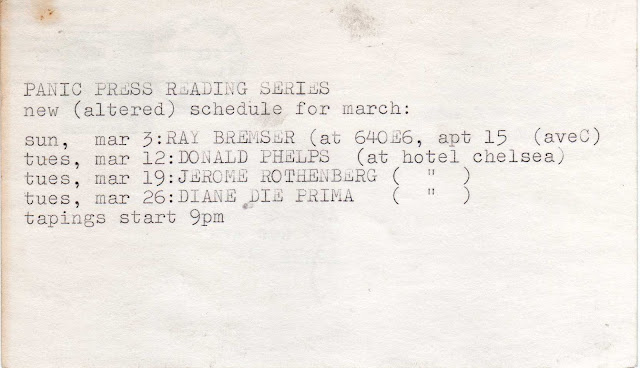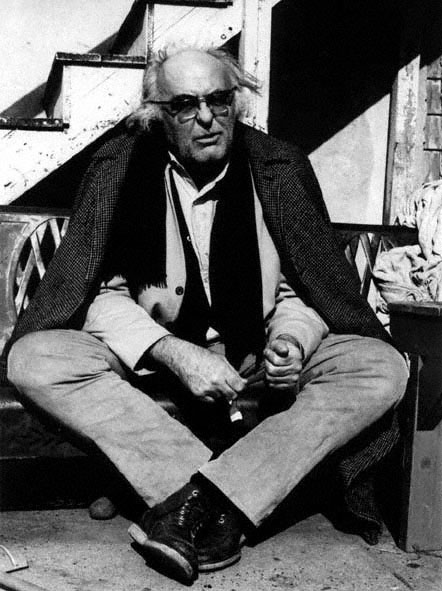On Tuesday Simon & Schuster announced that it is partnering with Author Solutions based in Bloomington, Indiana to create Archway Publishing, the latest major experiment in the booming self-publishing industry. Archway will provide authors with packages ranging from their ‘children’s’ special at $1,599 to their premium $25k ‘business book’ option complete with all the usual trimmings: design, marketing, distribution, and of course, the prospect of getting picked up by S&S itself if the book is successful. After the author invests in the writing and research and ponies up the cash to self-publish, S&S’s bean counters will ‘carefully monitor’ sales to determine if it is financially advantageous for them to swap out the Archway pressmark for the S&S pressmark. It’s a dubious business model, one that embraces the same predatory principles of the vanity press, which differs sharply from the kind of self-publishing we explore in Mimeo Mimeo.
I’ve always loved Gerald Gross’s Editors on Editing, in part, because it reminds me of another era. Many of the most experienced editors who contributed essays to this unique collection got into the industry when New York and London were the hubs for publishing. It was a pre-computer age where articulate, well-dressed professionals filed into their offices, greeted their secretaries, and began sifting through stacks of manuscripts looking for the next rising star. Editors worked closely with authors, engaging in lengthy discussions about art and life over martinis, sent them on all-expenses-paid book tours, and provided generous advances. I’m laying it on a little thick, but you see my point: under the S&S model, the role of the editor is marginal at best. The editor was once a great hunter, a harpooner like Queequeg, precise and steady on his feet, but under this new order, there’s little need for the talents of Melville’s character; all you need to run a publishing house is a big boat and huge net that will pick up anything in its path. When the net is full, bring it to market, see what sells, dump the rest, and go back out to sea. It’s the same model of labor that all websites that consist of user-generated content rely on for their survival. Give the people a template, let them fill it with information, sell it, and return the template to the people with targeted advertising.
The inspiring historical instances of self-publishing discussed in a new pamphlet, Do or DIY, by Craig Dworkin, Simon Morris, and Nick Thurston (Information as Material, 2012) present an alternative model, one with fewer rules and a more distinguished precedent, more off the grid, if you will. In this short survey of DIY literature, the authors present colorful anecdotes about poets and novelists ranging from Laurence Sterne, to Walt Whitman, to Raymond Roussel, to Virginia Woolf, to Ezra Pound. The message is clear: if they can do it, so can you. The ‘praxis’ section concludes: ‘don’t wait for others to validate your ideas. Do it yourself.’ I couldn’t agree more with this sentiment, in fact, if someone flipped the switch on an oversized DIY vacuum my library would consist of nothing by empty shelves. Today’s literary landscape would be the most barren, banal, and boring conceivable in the absence of independent publishing. Non-traditional publishing is expanding rapidly in the wake of the latest Random Penguin merger, antitrust wars between Apple and Amazon, and skyrocketing digital book sales. Coincidence? The authors point out that ‘...new writing is often essentially coextensive with its publication, as tweeting, blogging, texting, file-sharing, casting, streaming, and countless web-pages attest. With platforms for self-publishing today being so much cheaper and easier than letterpress was for Leonard and Virginia Woolf, there are fewer and fewer excuses for not distributing your work—no inky fingers, no strained back, and you don’t have to agree on the bulldog either.’
It’s true that new media has provided authors with more tools for self-publishing, and most are extremely user-friendly and affordable, allowing anyone with a laptop (or maybe just a smart phone) to bring their words into print, or at least into cyberspace, which is great for the author, but where does it leave the reader? How does one begin to sort through the swell of DIY literature without the guidance of an editor, a compelling book review, or an affinity for a particular publishing house? There are many publishers I admire and trust so much that I’ll read anything they choose to print. Just as there are new ways of publishing, there are of course plenty of new ways to stumble on new writers. Young poets don’t need faux prizes and rigged first book awards to get where they’re going, but that’s still the opinion of a minority. Pick up a copy of Poets & Writers and you’ll see what I mean—business based on the illusions of the MFA industry.
At Mimeo Mimeo we’ve always maintained that the Mimeo Revolution is not circumscribed by any particular medium or method of textual reproduction, but rather by an attitude that pre-dates the golden years of mimeo and continues through the present. The mimeo revolution produced some of the most beautiful, well-designed books and magazines of the 20th century. d.a. levy’s aesthetic was raw, the materials crude, the printing sloppy, what Jed Birmingham has referred to as ‘dirty mimeo’ while others seized ‘obsolete’ letterpresses, learned the practice of typography, and created dazzling books that rivaled the genius of the European and Russian avant-garde of the early 20th century. Both reflect the spirit of the times in the writing, art, media, and design. And today’s DIY books might reflect our times similarly, but let’s face it, there’s a lot of ugly-ugly books out there, and they’re contagious. There is an aesthetic that pervades the print-on-demand sites that is characterized by ignorance of basic typographic principles, glossy covers with ‘photoshopped’ images, so-called ‘perfect’ bindings, and shoddy editing. Incunabula still looks ravishing, while the internet, taken as a whole, is an absolute eyesore that we’ve learned to tolerate out of necessity. Digital aesthetics have a long way to go before they catch up with print, but to be fair, it’s important to remember that the digital world is still in its infancy, and with luck, will become more beautiful with age. When blogs first emerged, it seemed like a miracle: a free, user-friendly tool for self-publishing that is immediate, always available everywhere, and endlessly editable. People posted regularly and often wrote lengthy posts about a wide variety of subjects, and the blogroll or links to ‘friends’ in the sidebar provided a virtually unlimited network of related sites. For a while, it seemed like the conversation was successfully shifting from the little magazines (even after Y2K it wasn’t unusual to receive several print mags or newsletters in the mail every week) to the blogosphere. Now it seems that we’re in the twilight of the blogging era, as more immediate, mobile, and fragmented forms of communication continue to gain notoriety. The meaning and implications of ‘first thought best thought’ have changed, for as immediate as mimeo was in its time, it seems far more contained, sedate, and private than Twitter.
The Mimeo Revolution is still going strong, and I present this pamphlet as evidence. I have to disagree with the authors (just a little) when they claim: ‘Following on the DIY ethos of the mimeograph revolution, Language Poetry—the most important literary movement of the later 20th century—flourished when authors established their own presses, distribution networks, journals, reading series, and bookshops. Susan Howe’s Loon Press, Lyn Hejinian’s Tuumba Press, Johanna Drucker’s Druckwerks, and dozens of others in tandem altered the course of contemporary literature, whilst commercial publishing plodded on, oblivious and unchanging.’ Many of the early Language magazines to emerge from the mid-70s were printed on a mimeograph, and later the photocopier, so I don’t see Language ‘following on the DIY ethos of the mimeograph revolution,’ but rather as a literal, material part of it as recorded in A Secret Location on the Lower East Side, which leaves off at 1980. Lyn Hejinian discussed the history of Tuumba in Mimeo Mimeo #5. She printed 50 books letterpress between 1976 and 1984, including many early and first books by the emerging Language poets, as well as Susan Howe, who I’ve always been more inclined to read in dialogue with 19th century New England than Language. I could be missing something (please correct me), but as far as I can tell her Loon Press only published one book, her own TheLibertiesin 1980, which is a very different model from Hejinian’s ambitious chapbook series or Drucker’s artist’s books, which I would argue are related to the small press scene of the times, but better understood as literary works of art. Druckwerks did not publish Language poets, or any poets for that matter, and in that sense serves more as an imprint Drucker used for her unique fusion of radical typography and innovative writing, than other presses associated with Language, such as Sun and Moon or Roof Books. Perhaps it is implicit, but it’s worth reminding readers that these three presses may in fact represent a spectrum of approaches to publishing rather than a unified method for advancing ‘the most important literary movement of the later 20th century.’
There should be more DIY books like this, more research on the history of publishing, digital aesthetics, and the material conditions of literature—we’ve certainly never had a broader array of tools at our disposal for interpreting and sharing our research and Do or DIY is a terrific example of just how such ventures prove possible. Now write your own!
—KS


.jpg)


























